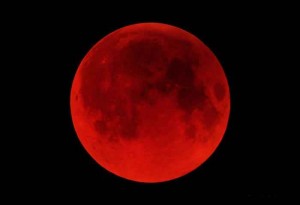The red moon
The red moon
The red moon
-
Hannah
-
Hannah
When I close my eyes and conjure up a picture of Africa, the setting of my novel Burning Embers, it is the colours that are most vivid. The dry yellow of the savannah. A terracotta building. A coral-pink kapok tree. Every shade of green among the leaves of the jungle. A sky so blue you feel you could fall into it, until the Great Artist daubs it with the reds and yellows of his palette. And then, an indigo, star-speckled sky dominated by a pendulous crimson moon.
A crimson moon? Yes, indeed.
Have you ever seen one? The moon – usually tranquil, cool, white – becomes blood-red, casting a warm light over all below. It is a sight you never forget, and one that I associate with Africa and the times I travelled there, and so I was keen to incorporate the natural phenomenon in Burning Embers:
The sun was just setting, staining the horizon with rose and deep gold. The ball of red fire dropped suddenly into the ocean; its reflection intensified and deepened before fading quietly away into the shadows of the evening. Soon the globe of the full moon took its place, as large as a balloon and as red as blood, an awe-inspiring spectacle that took Coral’s breath away. She loved the red moons that rose some African nights.
The red moon is caused by a deep lunar eclipse. The sun, the moon and the earth align, and the earth’s shadow falls on the moon. The stars glow brighter, and the dust and pollution through which the sun’s rays shine leads to the red cast of the sun. It is an amazing sight – it feels like you are standing on another planet, in another world. In his poem ‘The Harvest Moon’, Ted Hughes describes it thus:
And all the moonlit cows and all the sheep
Stare up at her petrified, while she swells
Filling heaven, as if red hot, and sailing
Closer and closer like the end of the world
Red: the colour of passion and blood and all that symobolises life and vitality, lighting up the world. You cannot get much more romantic.
